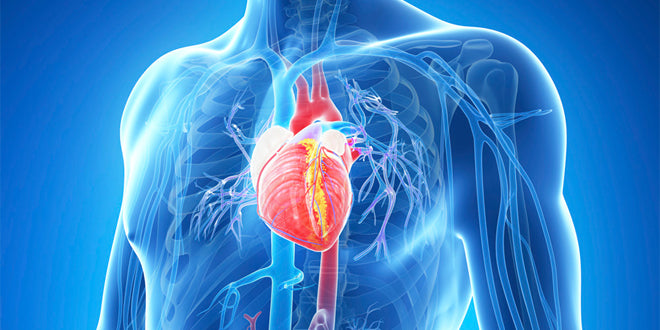Last week while doing research I discovered this new disease. The information I found amazed me but at the same time I became angry with what I found. Have you ever heard of this “disease?” It sure does sound scary doesn’t it? Is it life threatening! Is everyone in danger?
Before I answer those questions about this “disease,” I must set the stage from which it originated:
Imagine if you learned that every time you drove your car you increased your chance of untimely death by 20 percent or more? Would you consider an alternative mode of transportation?
92 people are killed on United States roadways each day and 30,800 annually. The number of deaths by motor vehicles – and deaths relative to the total population – have declined over the last two decades. Perhaps it is because more efforts are made to ensure the vehicle is equipped with safety features. It may be that people are being confronted with billboards, advertisements and even classes emphasizing safe driving measures. Even police are attempting to maintain roadside safety by checking on drivers’ habits and abilities. A great deal of effort has been in place to ensure motor vehicle deaths stay as low as possible.
If you learned that there are 100,000 people killed in airplane crashes each year, do you think there would be pressure on the Federal Aviation Administration to make significant changes to increase the safety of the passengers? Absolutely!
Yet, today, there is no other form of transportation as scrutinized, investigated and monitored as commercial aviation. Older aircraft are being replaced, and technology updated. Pilots are only allowed certain hours to work before they are required to take a break. The aviation industry is also quick to glean what it can from any accident, improving policies and training.
Over a lifetime, the chance of dying in an "air and space transport incident," as the National Safety Council describes it, are 1 in 8,357. In other words, it is rare that even 1,000 people ever die from airplane crashes in one year. To put that in perspective, by their data from 2010, an individual is more likely to die from causes including heat exposure (1:8,321), choking (1:3,649), in an accident as a pedestrian (1:723), a fall 17,105(1:152) or unintentional poisoning 21,000(1:119).
Travelers have numerous ways they can check the safety of their airline, although a good record is no guarantee of future safety. Resources including the Air Transport Rating Agency and AirlineRatings.com assess safety records and rank airlines.
Travelers can also check to see if their airline is part of the International Air Transport Association, which limits membership to airlines that have passed a safety audit. The European Union also maintains a list of airlines banned from operating there because they don't meet safety standards.
What if you were told that between 100,000 and 400,000 people are killed and over 2 million people maimed and disabled every year, from modern medicine...would you believe it?
In 1999, the Institute of Medicine published the famous "To Err Is Human" report, which dropped a bombshell on the medical community by reporting that up to 98,000 people a year die because of mistakes in hospitals. The number was initially disputed, but is now widely accepted by doctors and hospital officials — and quoted ubiquitously in the media.
In 2010, the Office of Inspector General for the Department of Health and Human Services said that bad hospital care contributed to the deaths of 180,000 patients in Medicare alone in a given year.
A more recent study in the issue of the
Journal of Patient Safety says the numbers may be much higher — between 210,000 and 440,000 patients each year who go to the hospital for care suffer some type of preventable harm that contributes to their death. That would make medical errors the third-leading cause of death in America, behind heart disease, which is the first, and cancer, which is second.
The rate of occurrence of this phenomena has resulted in the discovery of a new disease:
Iatrogenic Disease
Iatro—means: Medicine or Physician
Genic—means: Caused
The definition is: An inadvertent adverse effect or complication resulting from medical treatment or advice. Iatrogenesis can also result from complementary and alternative medical treatments or advice.
So, if there are 2.6 million deaths per year in the United States and 440,000 are due to Iatrogenesis, that means that 1 in 6 people will die from this “disease.”
What's the exact number? Nobody knows for sure. There's never been an actual count of how many patients experience preventable harm. So we're left with approximations, which are imperfect in part because of inaccuracies in medical records and the reluctance of some providers to report mistakes.
Measuring the problem is nonetheless important because estimates bring awareness and research dollars to a major public health problem that persists despite decades of so-called improvement efforts.
We need to get a sense of the magnitude of this. Is it a disease? No. Is it a dangerous problem? Absolutely!
These estimates are based on the findings of four recent studies that identified preventable harm suffered by patients — known as "adverse events" in the medical vernacular — using use a screening method called the Global Trigger Tool, which guides reviewers through medical records, searching for signs of infection, injury or error.
In the four studies, which examined records of more than 4,200 patients hospitalized between 2002 and 2008, researchers found serious adverse events in as many as 21 percent of cases reviewed and rates of lethal adverse events as high as 1.4 percent of cases.
By combining the findings and extrapolating across 34 million hospitalizations in 2007, it was concluded that preventable errors contribute to the deaths of 210,000 hospital patients annually.
That is the baseline. The actual number will likely more than double, because the trigger tool doesn't catch errors in which treatment should have been provided but wasn't, because it's known that medical records are missing some evidence of harm, and because diagnostic errors aren't captured. Additional research shows hospital reporting systems and peer-review capture only a fraction of patient harm or negligent care.
These statistics are further confused because most medical coding only describes the cause of organ failure and does not identify iatrogenic causes at all.
Perhaps it is time for a national patient bill of rights for patients. All evidence points to the need for much more patient involvement in identifying harmful events and participating in rigorous follow-up investigations to identify root causes.
Members of the Institute of Medicine committee knew at the time that their estimate of medical errors was low. It was based on a rather crude method compared to what we do now. Plus, medicine has become much more complex in recent decades, which leads to more mistakes.
It's important to update the numbers from the "To Err Is Human" report because in addition to the obvious suffering, preventable harm leads to enormous financial costs. It's time to stop citing the 98,000 number. Sadly, The American Hospital Association is sticking with the Institute of Medicine's estimate.
Eliminating medical errors must become a national priority. All the estimates, even on the low end, expose a crisis. Way too many people are being harmed by unintentional medical error and it needs to be addressed.
Table Of Iatrogenic Deaths In The United States
(Deaths induced inadvertently by a physician or surgeon or by medical treatment or diagnostic procedures)
|
Condition
|
Deaths
|
Cost Billion $’s
|
Author
|
|
Adverse Drug Reactions
|
106,000
|
12
|
Lazarou Suh
|
|
Medical error
|
98,000
|
2
|
IOM
|
|
Bedsores
|
115,000
|
2
|
IOM
|
|
Infection
|
88,000
|
5
|
Weinstein MMWR
|
|
Malnutrition
|
108,800
|
—
|
Nurses Coalition
|
|
Outpatients
|
199,000 |
77 |
Starfield Weingart 2 |
|
Unnecessary Procedures
|
37,136 |
122 |
HCUP |
|
Surgery-Related
|
32,000 |
9 |
AHRQ |
|
TOTAL
|
783,936
|
282
|
|
Whether you believe the statistics are skewed, or that accidents will happen, the point of this post is that people need to realize that there is significant risk when going to get medical or even alternative treatment. Until there can be measures implemented to protect the patient—perhaps similar to what the airline industry and the motor vehicle industry have done, and to ensure truth in reporting—the chances of getting a different result than you expected is greater than getting recovery.
Prevention and Care -- not treatment -- is the answer. Drugs, surgery and hospitals become increasingly dangerous for chronic disease cases. Facilitating your God-given healing capacity by improving diet, exercise, and lifestyle is the key.
Just as important, effective interventions for the underlying emotional and spiritual wounding behind most chronic disease is critical for the reinvention of our medical care system.
These numbers suggest that instead of discussing immigration reform at the next debates, perhaps it is time for the candidates to come up with plans to protect the people of this country from the medical atrocities that are far too common. Instead of creating a committee to look at emails from Benghazi, it is time to form a committee to learn from other industries how to review, evaluate and improve the medical paradigm that exists in this country. It really is a matter of life or death








